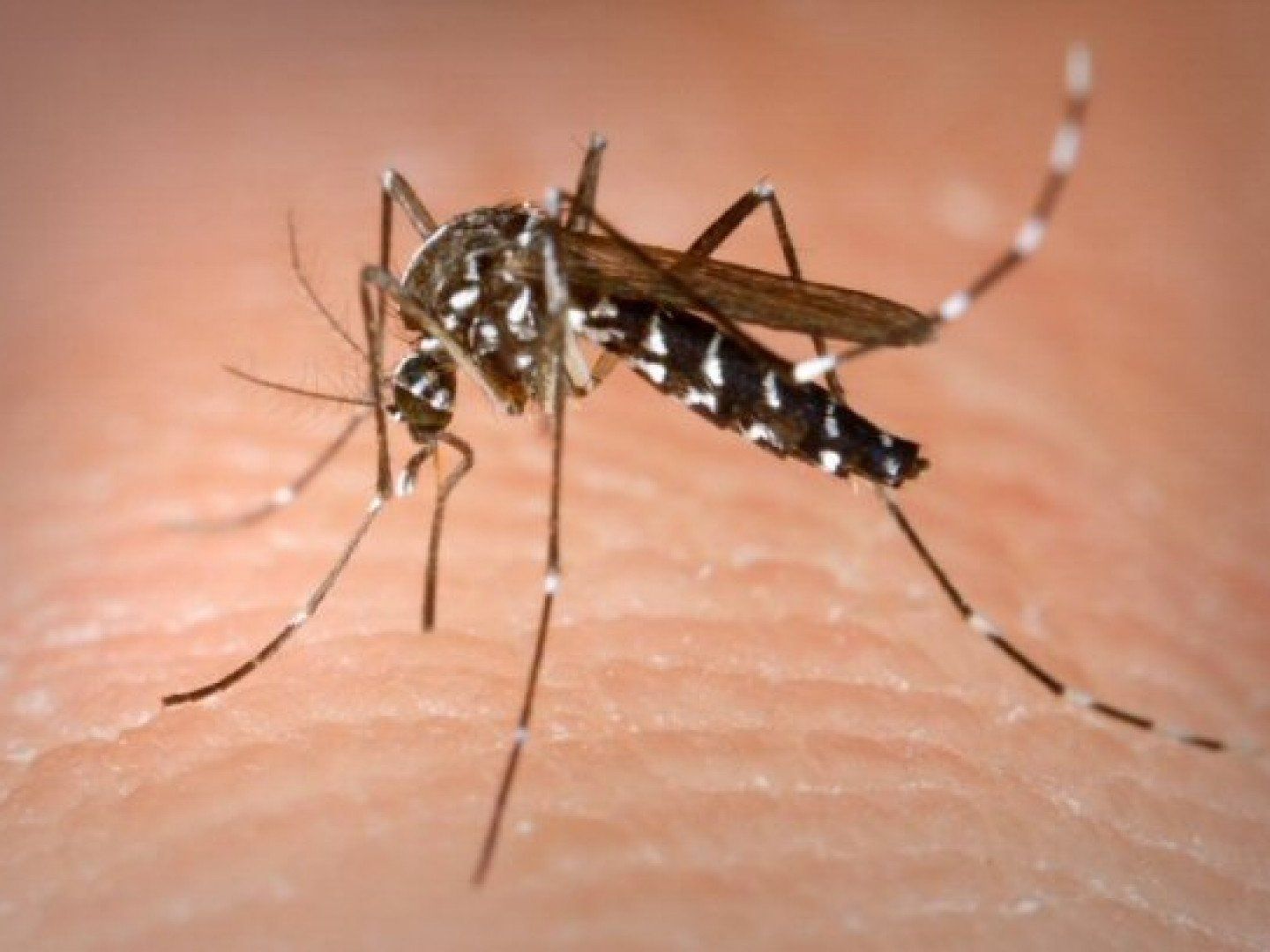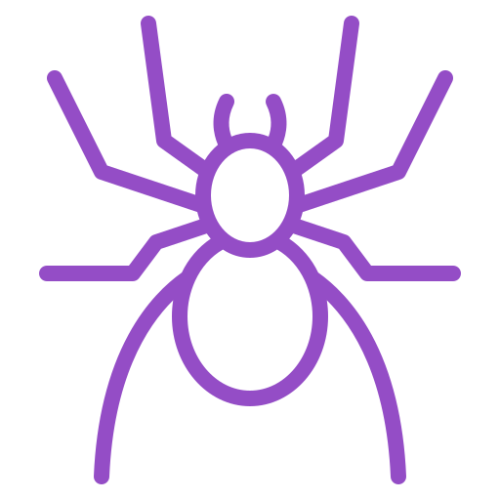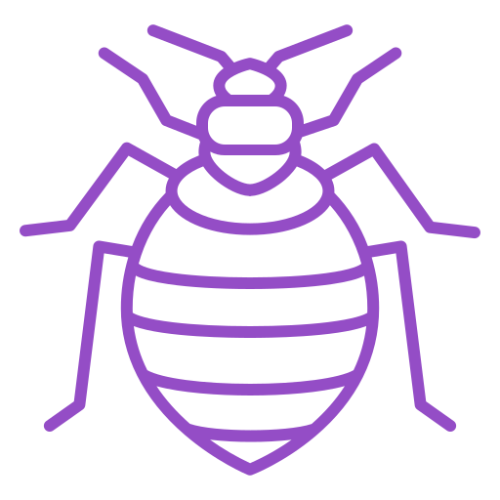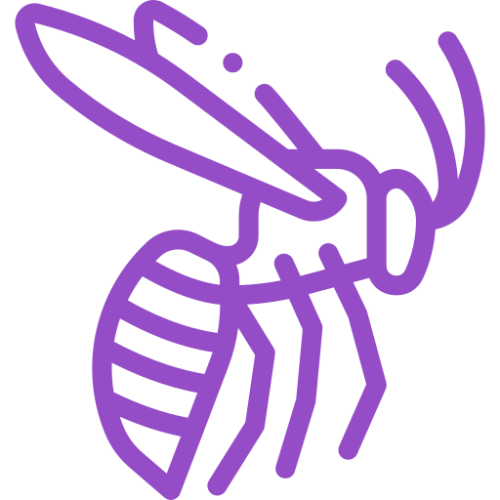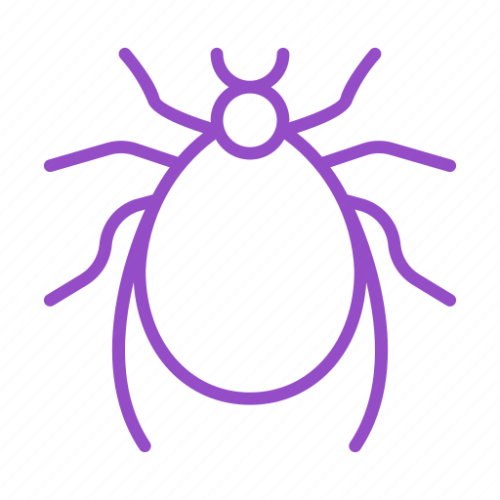Mosquito Control and Exterminator Service
The Best Mosquito Exterminator And Mosquito Control Services Near Me!
Great news! SmartGreen offers a guaranteed mosquito suppression control program.
Better news! SmartGreen offers reduced risk materials which are just as effective as the chemicals our competitors use.
Georgia has more than its share of mosquitos and as you know, mosquitoes can be dangerous. Mosquitoes feed on both human and animal blood, thereby potentially infecting host upon host. They are capable of transmitting numerous, sometimes fatal diseases such as West Nile Virus, malaria, dengue fever, yellow fever and canine heart worm.
We Provide Mosquito Control and The Following Services:
SmartGreen Pest and Mosquito Control is dedicated to exterminating and preventing pest infestations on your property. Our services eradicate the most common and even uncommon pest types. You can count on us for:
Trust SmartGreen Pest and Mosquito Control exterminators in Woodstock, Kennesaw, GA and surrounding areas to get rid of all types of insects around your property. Call (404) 937-7088 today to request eco friendly pest control at your home or office.
Understanding the Mosquito Life Cycle and Breeding Habits
Mosquitoes undergo a fascinating life cycle that consists of four distinct stages: egg, larva, pupa, and adult. Understanding this life cycle is crucial for effective mosquito control. Additionally, knowing their breeding habits and common breeding grounds will help us target these areas to disrupt their reproduction.
Life Cycle of a Mosquito
- Egg Stage: Female mosquitoes lay their eggs on or near water sources, such as stagnant ponds, puddles, or containers holding water. These eggs are typically laid in clusters called rafts and can survive in dry conditions for months until they come into contact with water.
- Larval Stage: Once the eggs are submerged in water, they hatch into larvae, commonly known as "wigglers." Mosquito larvae are aquatic and have a slender, worm-like appearance. They feed on organic matter and develop rapidly, molting several times as they grow.
- Pupa Stage: After the larval stage, the mosquito larvae transform into pupae. Pupae are comma-shaped and do not feed during this stage. They are highly active and use air tubes to breathe while floating at the water's surface. Within a few days, the pupae undergo a dramatic metamorphosis.
- Adult Stage: Finally, the pupa splits open, and an adult mosquito emerges. Male mosquitoes usually live for about one to two weeks, while females can live for several weeks or even months. Female mosquitoes require a blood meal to develop their eggs and continue the life cycle.
Common Breeding Grounds
Mosquitoes have adapted to breed in a wide range of environments, but some common breeding grounds include:
- Stagnant Water: Mosquitoes prefer stagnant water sources, such as ponds, marshes, and swamps, for breeding. Even small amounts of standing water, like puddles, flower pots, or rainwater collected in containers, can serve as breeding sites.
- Water Containers: Artificial water containers, such as buckets, birdbaths, discarded tires, and clogged gutters, are ideal breeding grounds for mosquitoes. It's important to regularly empty and clean these containers to prevent mosquito breeding.
- Natural Habitats: Certain species of mosquitoes breed in natural habitats like tree holes, leaf axils, and bamboo stumps. These hidden breeding sites can be challenging to detect and eliminate.
Seasonal Breeding Patterns
Mosquito breeding patterns are influenced by environmental factors, including temperature, humidity, and availability of water sources. While specific species may have different preferences, mosquitoes generally breed more during the warmer months. However, some species can adapt and breed in colder climates as well.
Understanding the mosquito life cycle and their preferred breeding grounds is crucial for implementing effective control measures. By targeting these areas and interrupting their reproductive cycle, we can significantly reduce mosquito populations and minimize their impact on our lives.
Mosquito-Borne Diseases and Their Impact
Mosquitoes are not just annoying pests; they are also responsible for transmitting numerous diseases to humans and animals. Understanding the impact of mosquito-borne diseases is essential for prioritizing mosquito control efforts and protecting public health. In this section, we will explore common mosquito-borne diseases, their symptoms and treatment, and the global impact of these diseases.
Common Mosquito-Borne Diseases
- Malaria: Malaria is a life-threatening disease caused by the Plasmodium parasite and transmitted by female Anopheles mosquitoes. It affects millions of people worldwide, especially in tropical and subtropical regions. Symptoms include fever, chills, headache, and fatigue.
- Dengue Fever: Dengue fever is a viral disease transmitted by Aedes mosquitoes. It is prevalent in tropical and subtropical areas, causing flu-like symptoms such as high fever, severe headache, joint and muscle pain, and rash. In severe cases, it can lead to dengue hemorrhagic fever or dengue shock syndrome, which can be fatal.
- Zika Virus: Zika virus is primarily transmitted by Aedes mosquitoes and gained global attention during outbreaks in recent years. It can cause mild to severe symptoms, including fever, rash, joint pain, and conjunctivitis. Of particular concern is its association with birth defects such as microcephaly in infants born to infected mothers.
- West Nile Virus: West Nile virus is transmitted by infected mosquitoes, primarily Culex species. While most cases result in mild or no symptoms, some individuals may experience fever, headache, body aches, joint pain, vomiting, diarrhea, or rash. In rare cases, severe neurological complications can occur.
- Chikungunya: Chikungunya is a viral disease transmitted by Aedes mosquitoes. It causes fever, severe joint pain, muscle pain, headache, rash, and fatigue. Although rarely fatal, the symptoms can be debilitating, lasting for weeks or months.
Symptoms and Treatment
The symptoms of mosquito-borne diseases can vary from mild to severe, and in some cases, they can be life-threatening. Seeking medical attention is essential if you experience any concerning symptoms after being bitten by mosquitoes. Treatment options will depend on the specific disease but may include supportive care, antiviral medications, or specific treatments targeting the infection.
Global Impact of Mosquito-Borne Diseases
Mosquito-borne diseases have a significant impact on global health, particularly in regions where mosquitoes are abundant and disease transmission is prevalent. These diseases impose a substantial burden on affected individuals, communities, and healthcare systems. They contribute to increased morbidity and mortality rates, economic losses, and hinder social and economic development in affected areas.
By understanding the prevalence and impact of mosquito-borne diseases, we can better appreciate the importance of effective mosquito control measures. It is crucial to raise awareness, promote preventive measures, and support research and initiatives aimed at combating these diseases on a global scale.
Effective Methods of Mosquito Control
To combat mosquitoes effectively, a combination of various control methods is often necessary. In this section, we will explore different strategies for mosquito control, including preventative measures, physical control methods, chemical control methods, and biological control methods. Implementing these methods will help reduce mosquito populations and minimize the risk of mosquito-borne diseases.
Preventative Measures
- Eliminate Standing Water: Mosquitoes require standing water to breed, so removing or treating potential breeding sites is crucial. Regularly empty and clean water containers, unclog gutters, and ensure proper drainage. Additionally, cover or treat water sources that cannot be emptied, such as ponds or rain barrels.
- Use Mosquito Repellents: Apply mosquito repellents containing ingredients like DEET, picaridin, or oil of lemon eucalyptus to exposed skin, following the product instructions. Wearing long sleeves, pants, and socks can provide additional protection.
- Install Window and Door Screens: Ensure that windows and doors have properly fitting screens to keep mosquitoes out of your home. Repair or replace damaged screens to prevent mosquitoes from entering.
- Avoid Peak Mosquito Activity: Mosquitoes are most active during dawn and dusk. If possible, limit outdoor activities during these times or use protective measures like wearing long clothing and using mosquito nets.
Physical Control Methods
- Mosquito Traps: Mosquito traps, such as CO2 traps or UV light traps, can effectively capture and reduce mosquito populations. These traps attract and trap mosquitoes, preventing them from biting and reproducing.
- Mosquito Nets: Use mosquito nets over beds and windows to create a physical barrier that prevents mosquitoes from entering living spaces. This is particularly important in areas where mosquito-borne diseases are prevalent.
Chemical Control Methods
- Insecticides: Insecticides formulated for mosquito control can be used to treat breeding sites, such as stagnant water sources. Larvicides target mosquito larvae, while adulticides are designed to kill adult mosquitoes. It is essential to follow the instructions and precautions provided by the product manufacturer.
- Fogging and Spraying: In situations where mosquito populations are high or during disease outbreaks, fogging or spraying insecticides in outdoor areas can help reduce adult mosquito populations. These methods are typically performed by trained professionals to ensure safety and effectiveness.
Biological Control Methods
- Mosquito-Eating Fish: Introducing mosquito-eating fish, such as Gambusia affinis (mosquito fish), into water bodies can help control mosquito larvae. These fish feed on mosquito larvae, reducing their numbers naturally.
- Bacterial Larvicides: Bacillus thuringiensis israelensis (BTI) and Bacillus sphaericus (BS) are bacterial larvicides that specifically target mosquito larvae. These biological control agents are safe for humans and other non-target organisms.
Implementing a combination of these methods, tailored to the specific mosquito species and local conditions, can significantly reduce mosquito populations and their impact on human health. It's important to choose the most appropriate methods and implement them consistently to achieve long-term mosquito control.
Professional Mosquito Control Services
While many mosquito control methods can be implemented by individuals, there are situations where hiring professional mosquito control services becomes necessary. In this section, we will explore when it is appropriate to hire professionals, how to choose the right service, and what to expect from their services.
When to Hire a Professional
- Large Infestations: If you are dealing with a significant mosquito infestation that you cannot manage on your own, it may be time to seek professional help. Professionals have the expertise and resources to effectively tackle large-scale mosquito problems.
- Persistent Breeding Grounds: Some breeding grounds may be difficult to identify or eliminate, especially in larger properties or complex landscapes. Professional mosquito control services can assess and address these persistent breeding areas more efficiently.
- High-Risk Areas: If you live in an area where mosquito-borne diseases are prevalent or have experienced outbreaks, it is advisable to hire professionals to ensure comprehensive mosquito control and reduce disease transmission risks.
Choosing the Right Service
- Research and Reviews: Conduct thorough research on local mosquito control services. Look for reputable companies with positive customer reviews and a track record of successful mosquito control. Seek recommendations from friends, neighbors, or local health departments.
- Licensing and Certification: Ensure that the service provider is licensed and certified to perform mosquito control. This ensures that they meet industry standards and have the necessary training and expertise.
- Integrated Pest Management (IPM) Approach: Look for companies that follow an Integrated Pest Management approach. This approach emphasizes a combination of control methods, including prevention, monitoring, and targeted treatments, to minimize the use of chemicals and achieve long-term control.
- Environmental Considerations: Consider companies that prioritize environmental stewardship by using environmentally friendly products and techniques. This helps minimize the impact on beneficial insects, wildlife, and the ecosystem.
What to Expect from a Service
- Inspection and Assessment: Professional mosquito control services typically begin with a thorough inspection of your property to identify breeding sites and areas of concern. They will assess the mosquito population and develop a customized control plan.
- Treatment and Control Measures: Based on their assessment, professionals will implement appropriate control measures tailored to your specific situation. This may include larviciding, adulticiding, fogging, or other targeted treatments.
- Monitoring and Follow-up: Professional services often include regular monitoring and follow-up visits to ensure the effectiveness of the control measures. They may also provide recommendations for ongoing mosquito prevention and maintenance.
- Education and Advice: Professional mosquito control services can offer valuable education and advice on mosquito prevention measures, such as landscaping tips, water source management, and personal protection strategies.
Hiring professional mosquito control services can provide effective and efficient solutions for managing mosquito populations, especially in more challenging situations. By choosing the right service provider and working collaboratively, you can create a safer and more enjoyable environment with reduced mosquito activity.
Community-Based Mosquito Control Initiatives
Community-based mosquito control initiatives play a crucial role in combating mosquito populations and reducing the risk of mosquito-borne diseases. By mobilizing community members and fostering a collaborative approach, these initiatives can achieve significant and sustainable results. In this section, we will explore the importance of community involvement, how to create a community action plan, and highlight success stories of community-based mosquito control initiatives.
Importance of Community Involvement
- Shared Responsibility: Mosquito control is not solely the responsibility of government agencies or professional services. It requires active participation from community members to address breeding grounds, implement preventive measures, and raise awareness about mosquito-borne diseases.
- Collective Impact: When communities come together, their efforts can have a more significant impact. By pooling resources, knowledge, and manpower, community-based initiatives can tackle mosquito control on a broader scale.
- Sustainable Solutions: Community involvement promotes long-term sustainability. By empowering individuals and communities to take ownership of mosquito control, it fosters ongoing commitment and investment in preventive measures.
Creating a Community Action Plan
- Form a Committee: Establish a committee or task force dedicated to mosquito control within the community. This group can coordinate efforts, plan initiatives, and ensure community engagement.
- Identify Priority Areas: Conduct a thorough assessment of the community to identify mosquito breeding grounds, high-risk areas, and areas of concern. This will help prioritize efforts and allocate resources effectively.
- Educate and Raise Awareness: Conduct educational campaigns to inform community members about mosquito-borne diseases, prevention techniques, and the importance of mosquito control. Utilize various channels such as workshops, community meetings, social media, and printed materials to reach a wide audience.
- Implement Preventive Measures: Encourage community members to take individual preventive measures, such as eliminating standing water, using repellents, and maintaining clean surroundings. Provide guidance and support to ensure proper implementation.
- Engage in Source Reduction: Organize community clean-up events to remove potential mosquito breeding sites, such as clearing debris, unclogging drains, and addressing neglected areas. Encourage proper waste management practices to prevent water accumulation.
- Promote Biological Control: Introduce mosquito-eating fish, encourage the use of biological larvicides, and promote the preservation of natural predators like birds, bats, and dragonflies that feed on mosquitoes.
- Collaborate with Local Authorities: Partner with local health departments, government agencies, and professional mosquito control services to leverage their expertise, resources, and support. This collaboration can enhance the effectiveness of community-based initiatives.
Success Stories of Community-Based Initiatives
- Citizen Science Programs: Engaging community members in data collection and monitoring efforts, such as mosquito surveillance and reporting, has proven successful in various communities. This data helps identify hotspots, target control measures, and track the effectiveness of interventions.
- Neighborhood Associations: Neighborhood associations have organized community-wide efforts, including regular clean-up campaigns, educational workshops, and collaboration with local authorities. These initiatives have significantly reduced mosquito populations and enhanced quality of life.
- School-Based Programs: Schools have played a vital role in educating students and their families about mosquito control. By integrating mosquito control education into the curriculum and organizing awareness campaigns, schools contribute to community-wide efforts.
By harnessing the collective power of community involvement, community-based mosquito control initiatives can make a substantial difference in reducing mosquito populations and preventing mosquito-borne diseases. Through education, collaboration, and sustained efforts, communities can create a healthier and more mosquito-resistant environment for everyone.
What To Do About Mosquitoes
Millions of mosquitoes are born every day, making it impossible to completely get rid of mosquitoes. You can help reduce the number of mosquitoes around your property by eliminating any areas of stale, stagnant, standing water and by contacting SmartGreen. A SmartGreen pest professional will design a customized mosquito control program that fits the specific needs of your property, with the goal of reducing the number of mosquitoes invading your property.
Call (404) 937-7088 today schedule today with SmartGreen for your Mosquito control services.
Why Choose SmartGreen For Mosquito Control
- Eco-Friendly Program- We offer a monthly service which runs from March-October. Due to extremely low use rates, our product minimizes the amount of material introduced into the environment when applied as directed.
- Green Program- We offer a 21 day guaranteed service which runs from March-October. This program uses the very best green products on the market today.
- We offer neighborhood group discounts as well as service for schools, daycare's, wedding/large party venues, common areas and multi-family housing.
- We also offer a one-time service.

